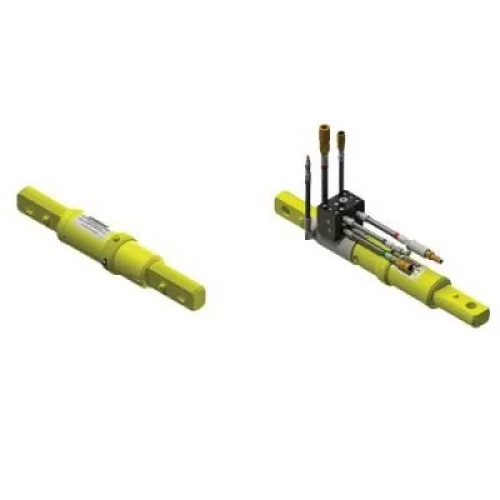Inline Safety Fuse
As part of our commitment to provide a safe work environment, we have developed the INLINE SAFETY FUSE™. The purpose of the safety fuse is to prevent failure of auxiliary elevator and rigging, and maintain control of the single joints or stands during an overpull situation by providing personnel with an indication of overload, so that they have the opportunity to halt hoisting operations.
For years, the typical rig-up of an auxiliary elevator has included an inline swivel that allows the joint to spin freely during make-up or break-out. During breakout operations, it is possible for the pin and box threads to hang up as the driller is hoisting the joint upwards, often resulting in an overload of the elevator and associated rigging. This is especially a problem with negative load flank threads, commonly found on premium connections. Often times this overloading will result in a failure of the inline swivel or rigging, causing the driller to lose control of the joint.
The safety fuse functions as a conventional swivel that serves as a known “weak link” in the auxiliary elevator rigging assembly that shears at a pre-determined load.
Once an overload has occurred, that shear pin “weak link” will fail, allowing the telescoping rod of the safety fuse to extend without a complete separation of the auxiliary elevator rigging. This brief instant provided by the safety fuse extension allows hoisting operations to be stopped in order to maintain control of the joint or stand, and personnel to clear the rig floor. After the shear has occurred, the telescoping rod has a contrasting color that serves as a clear indicator that the system has been overloaded. After an overload occurs, the fuse assembly, auxiliary elevator and associated rigging are visually inspected and a new shear pin is installed before the pipe running operations are continued.
Related products

©2026 Expro. All rights reserved.
EXPRO HOLDINGS UK 2 LIMITED
Registered in England and Wales
Company number: 06491951
Registered office address: Second Floor Davidson House, Forbury Square, Reading, Berkshire, United Kingdom, RG1 3EU
